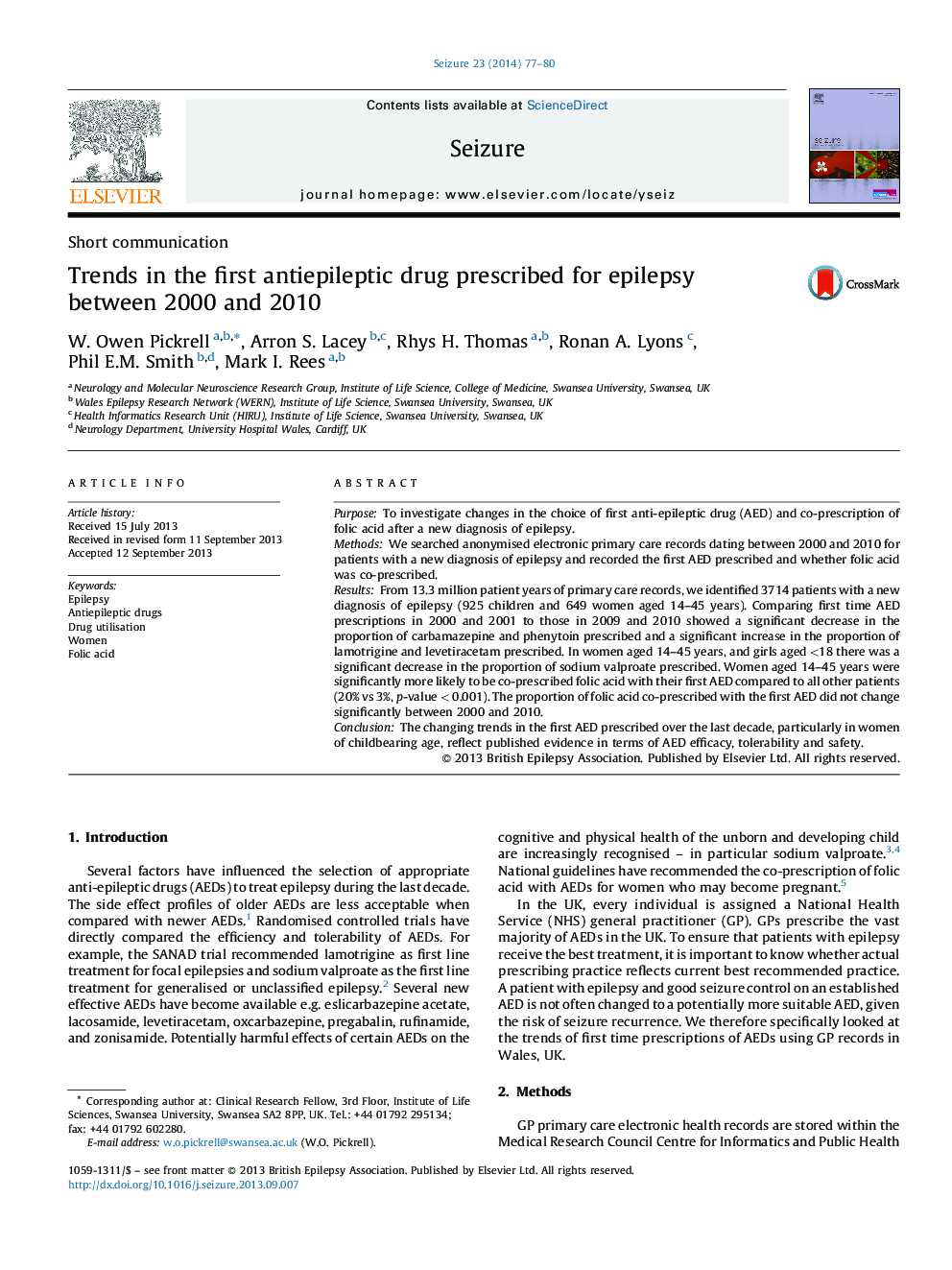| Article ID | Journal | Published Year | Pages | File Type |
|---|---|---|---|---|
| 340465 | Seizure | 2014 | 4 Pages |
PurposeTo investigate changes in the choice of first anti-epileptic drug (AED) and co-prescription of folic acid after a new diagnosis of epilepsy.MethodsWe searched anonymised electronic primary care records dating between 2000 and 2010 for patients with a new diagnosis of epilepsy and recorded the first AED prescribed and whether folic acid was co-prescribed.ResultsFrom 13.3 million patient years of primary care records, we identified 3714 patients with a new diagnosis of epilepsy (925 children and 649 women aged 14–45 years). Comparing first time AED prescriptions in 2000 and 2001 to those in 2009 and 2010 showed a significant decrease in the proportion of carbamazepine and phenytoin prescribed and a significant increase in the proportion of lamotrigine and levetiracetam prescribed. In women aged 14–45 years, and girls aged <18 there was a significant decrease in the proportion of sodium valproate prescribed. Women aged 14–45 years were significantly more likely to be co-prescribed folic acid with their first AED compared to all other patients (20% vs 3%, p-value < 0.001). The proportion of folic acid co-prescribed with the first AED did not change significantly between 2000 and 2010.ConclusionThe changing trends in the first AED prescribed over the last decade, particularly in women of childbearing age, reflect published evidence in terms of AED efficacy, tolerability and safety.
